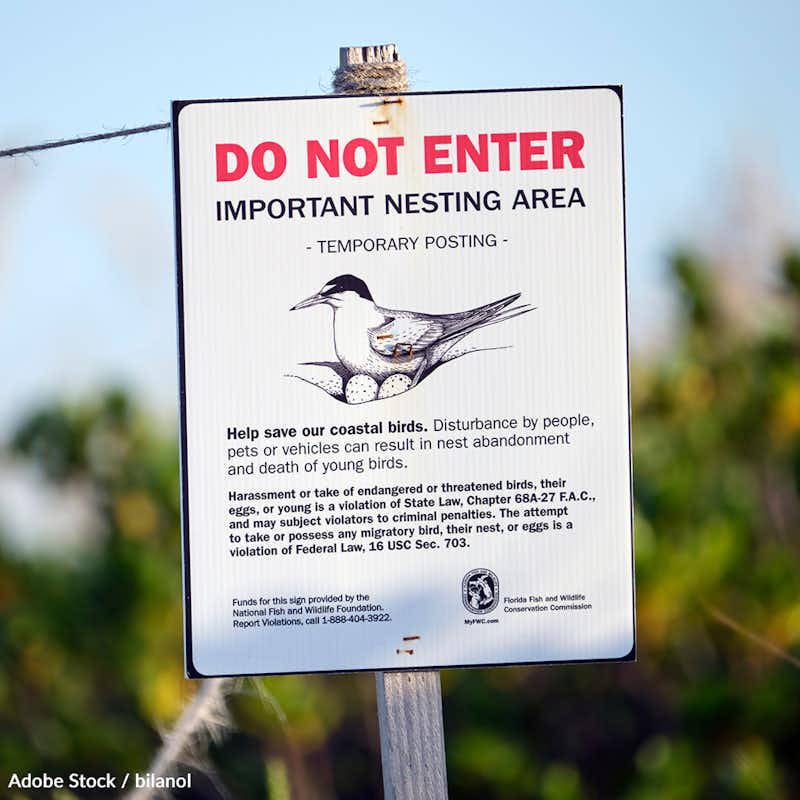Ban Toxic Pesticides On U.S. Wildlife Refuges
19,277 signatures toward our 30,000 Goal
Sponsor: The Rainforest Site
Dangerous pesticide use on national wildlife refuges hurts the environment and threatens wildlife and throughout the U.S. Take action!

The use of dangerous agricultural pesticides on national wildlife refuges puts wildlife and the environment at great risk1.
The U.S. National Wildlife Refuge System is the largest and most diverse collection of lands dedicated to the preservation of fish and wildlife, and s home to more than 280 species of protected plants and animals2. However, the Service allows private organizations to grow commercial crops on these lands, as well as apply hundreds of thousands of pounds of dangerous pesticides each year3.
Data shows that in 2018 more than 350,000 pounds of agricultural pesticides were sprayed on 363,000 acres of commercial agricultural crops in the refuges4. That is a 34% increase over the pesticide coverage area just two years prior5.
U.S. legislators, the Center for Biological Diversity and others have called for an end to the uses of agricultural pesticides on refuges, including glyphosate, 2,4-D, dicamba and paraquat — all of which have been shown to harm wildlife6.
A rollback has also been requested to a decision by the Trump administration allowing use in national wildlife refuges of bee- and bird-killing neonicotinoids and genetically engineered crops, which the Biden Administration has so far carried on7.
Genetically engineered crops are designed to withstand large amounts of pesticides that what would normally kill native plants. That means there will be dramatic increases in pesticide use as GE crops grow in adoption8.
More than 1 billion pounds of pesticides are used across the United States each year, leeching into the support systems for fields, forests and waterways, putting protected wildlife and plants at great risk. Even areas that the Service has legally designated as critical habitat essential for helping species to recover and dodge extinction have been damaged by pesticide use9.
National wildlife refuges are strategically located close to cities, so people have access10. In fact, 101 urban national wildlife refuges out of the 567 nationwide are located within 25 miles of cities with populations over 250,000. These refuges serve 80% of Americans who live in and around these metro areas11.
Dangerous pesticide use hurts these resources, the environment, and threatens wildlife throughout the U.S.
Sign the petition and help us ask the U.S. Fish and Wildlife Service to end the use of dangerous agricultural pesticides on national wildlife refuges.
- Friends of Animals (8 August 2022), "We need your help to ban pesticides on National Wildlife Refuges."
- U.S. Fish & Wildlife Service, "National Wildlife Refuge System."
- Beyond Pesticides (30 March 2022), "Animals in Wildlife Sanctuaries at Greater Risk of Pesticide Exposure from Internal Agricultural Practices."
- Andy McGlashen, Audubon (15 March 2022), "Pesticide Spraying on National Wildlife Refuges Needs to Stop, Advocates Say."
- Hannah Connor, Center for Biological Diversity (August 2020), "No Refuge: More Acres of America’s National Wildlife Refuges Are Being Doused in Harmful Pesticides."
- Sierra Sun Times (23 July 2022), "U.S. Senator Cory Booker Leads Colleagues in Calling for Ban of Agricultural Pesticides on National Wildlife Refuges."
- Center for Biological Diversity, The Defender (21 July 2022), "Biden Admin Refuses to Phase Out Toxic Pesticides on National Wildlife Refuges."
- Union of Concerned Scientists (2 November 2004), "Genetically Engineered Crops and Pesticide Use."
- Beyond Pesticides "Impacts of Pesticides on Wildlife."
- U.S. Fish & Wildlife Service (28 January 2021), "Map of the National Wildlife Refuge System."
- U.S. Fish & Wildlife Service "Urban National Wildlife Refuges."
The Petition:
To the Director of the U.S. Fish and Wildlife Service,
The U.S. National Wildlife Refuge System is the largest and most diverse collection of lands dedicated to the preservation of fish and wildlife, home to more than 280 species of protected plants and animals.
However, the U.S. Fish & Wildlife Service allows private organizations to grow commercial crops on these lands, as well as apply hundreds of thousands of pounds of dangerous pesticides each year.
In 2018 alone, more than 350,000 pounds of agricultural pesticides were sprayed on 363,000 acres of commercial agricultural crops in the refuges.
This poses a horrific threat to the environment, protected species, and the health of humans near wildlife refuges where pesticides are applied.
The problem is only getting worse, as more than 1 billion pounds of pesticides are now used across the United States each year.
I implore you to end the use of dangerous agricultural pesticides on national wildlife refuges.
Sincerely,